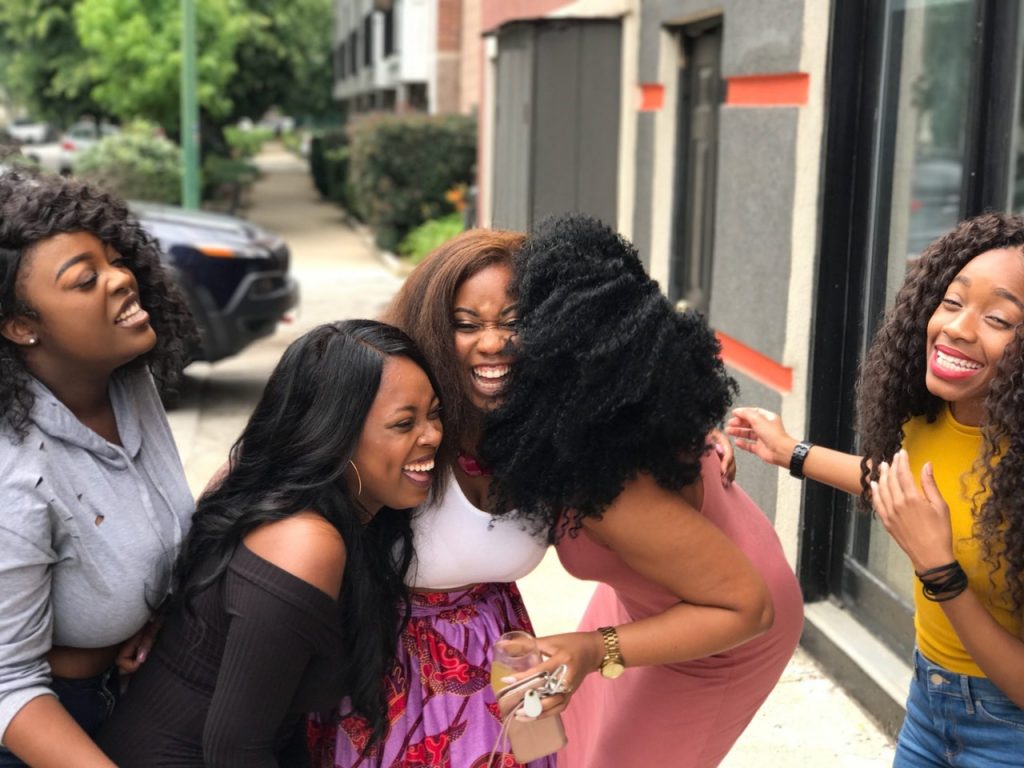 Have you ever been in a sea of people and still felt lonely and emotionally disconnected? Many people have only surface-level friendships that don’t allow for the self disclosure of vulnerability required for deeper relationships.
Have you ever been in a sea of people and still felt lonely and emotionally disconnected? Many people have only surface-level friendships that don’t allow for the self disclosure of vulnerability required for deeper relationships.
However, a deep connection with a friend can help reduce stress, anxiety, and loneliness when we might otherwise feel like an isolated mess. The connections we have as moms surpass ages and stages or kids. These connections are about filling our emotional cups, and it’s crucial!
Identifying the 3 Types of Friendships
- Support Pack. Your A-friends account for the 1-5 people whom you rely on for emotional support; they know the “good, bad, and messy.” They love you unconditionally, no matter what. You feel comfortable with self-disclosure with this group.
- Sympathy Group. Middle friends, or B-friends, account for about 15 people in your social network. They know the good and the bad, but you won’t be as vulnerable with this group as with your A-Friends. These friends are your neighbors, coworkers, church friends, PTA friends, and the like. The people who help with carpool, projects, and social support.
- Active Crowd. Your C-friends, or acquaintances, are your “low-cost support.” That means there is a low risk of abandonment and rejection by these friends because you don’t see them often enough to self-disclose about the most intimate parts of your life. This group accounts for about 120 to 150 people.
Although friends fall into these general categories, all categories of friends are essential. Taking stock, you may already have a sizable C-friend crowd. If not, start building this group before cultivating your B and A friends.
How to Make Mom Friends in Midlife
Nurturing deep friendships in midlife is particularly challenging, mainly because we become more isolated with age. Plus, many people have their established support gang, and it’s hard to break into those groups.
While there are many places you can simply find people, and growing your C-friend group can be pretty easy, your goal is to find mom friends who help you feel heard, seen, felt, and like you matter. Here’s how to make close, trusting relationships using your existing network:
- Promote from within. Take inventory of your current network of friends (A, B, and C). Identify those you would like to get to know more. Who do you run into in the neighborhood, job, school, or community events who always makes you smile? Who always seems to show up in the same meetings or circles?
- Reach out. Identify 1-3 people you’d like to get to know. Ask for a coffee date, chat online, or text. Open a conversation with something straightforward like, “I see we’re both in ______ group. Are you going to the event they have planned next Friday?” Or, “I see we’re both friends with _____. How do you two know each other?”
- Engage in small talk. “Tell me about yourself.” “Where did you grow up?” “How long have you lived in _____?” “What kind of work do you do?” “Do you travel much? If so, where is your favorite place?” Think of each question as a rabbit hole that can take you through to at least 3-5 additional queries. You aren’t just listening for answers; you’re listening for opportunities. Keep your ears perked. You’re listening not for just things you have in common, but ways that you feel drawn to this person.
- Pepper in self-disclosure. Talk about one or two of your rough spots. That is, be vulnerable. I’m not asking you to dive right into the deep end of the ocean without a life jacket. I’m encouraging you to dip a toe in the water while sitting on the steps. For example, “It’s been a rough week. I have felt sluggish, and I can’t put my finger on why.” Or, “My kids have been driving me a little bananas. Sometimes I feel like a horrible parent, and I hate that feeling.” Be careful not to take this down a dark path. Good friends aren’t there to be your gossip friends, and going too deep too quickly can be a turnoff. Listen to how they respond. Can they take the heat of vulnerability? If yes, continue; if no, this may not be a possible A-friend.
- Take turns. Friendships are equal parts give and take. That means you should disclose some parts of yourself, but also invite the person you’re with to also self-disclose. When they disclose, listen hard. Answer with empathy, concern, and compassion. This is what good, connected friends do.
- Continue the conversation. After your first meeting, and you’ve dipped your toe in the water, decide if you want to pursue this deeper friendship. Next time, put two toes in the water, or even your whole foot. No need to jump in all at once.
- Repeat with more self-disclosure. Last, repeat the above steps, increasing your vulnerability each time. Remember, surface-level friends are C-friends. There is nothing wrong with this friendship, but you aren’t going to feel the deep, emotional richness of a person without being willing to talk about your rough edges.
Expect this process to take awhile. Opening up with your most challenging life moments is tough for almost everyone. But it’s worth it. Deep friendships take time to nurture, and for good reason. They are a big deal and they’ll usually last a whole lifetime.













